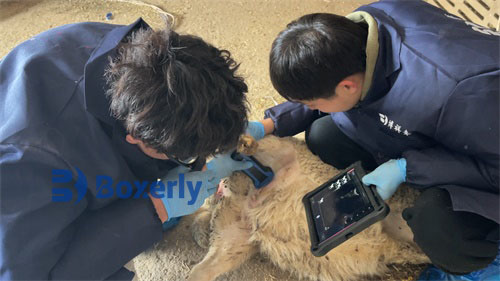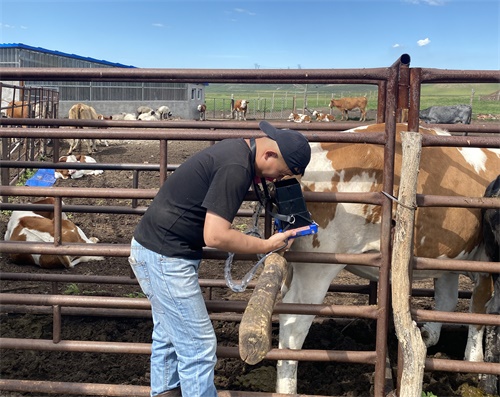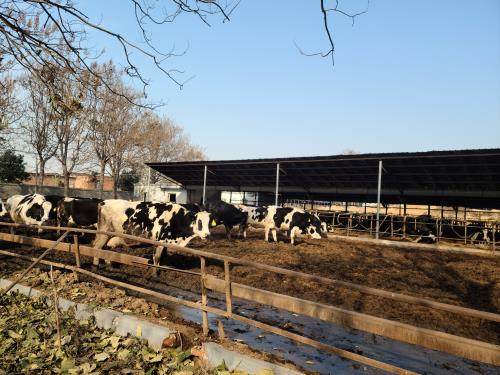Pig farm staff will use pig ultrasound machines to evaluate the carcass value of reserve sows and verify the predicted backfat thickness and/or average daily weight gain and lean meat content as objective factors for assessing their physical condition.
The mating of reserve sows is related to early mating, with fewer piglets born after conception and/or a longer period of available estrus time, which may be twice as long as that of older sows. Due to these reasons, producers may often believe that reserve sows designed to replace sow herds are a risk factor. In addition to nutrition, health, and animal welfare, early mating of reserve sows, early weaning of piglets, and optimal delivery intervals are the main production and economic factors in the piglet industry. Especially among young reserve sows in the delivery pen, their weight will decrease and their physical condition will undergo negative changes.
Measurement of backfat eye muscle area using a B-ultrasound machine in pigs
The understanding of the relationship between reproductive disorders and carcass composition in reserve sows (sows) suggests that the reduction of so-called fat pools achieved through breeding may only partially explain this issue. However, the * * * or dynamic level of lean meat content may be a key parameter for both reserve sows and normal reproductive processes in sows.
In the process of breeding animals, reproductive traits and/or traits from field experiments have low statistical significance, and some objective factors are introduced into the physical condition of reserve sows (sows). In addition to weight gain, these elements may be derived from the average backfat thickness measured by bt1 and bt2, as well as the lean meat content determined by the PT of the reserve sow, and converted from the weight on the measurement day to the declared weight per selection based on the regression function mentioned above. The assessors (committee) who evaluate the type, physique, and body size of breeding reserve sows will receive objective guidance to allocate 1-5 points based on type (lean meat content) and condition (backfat thickness). A four point method was proposed to evaluate the physical condition of sows (1- good, 2- slightly thin, 3- very thin, 4- fat). The goal of feeding, feeding techniques, and nutrition should be to keep the sow in a 1-2 state throughout the entire reproductive cycle, and only in the late lactation period can it accept a 3 state. They pointed out the relationship between backfat thickness and parity. The condition of the reserve sow (1st litter) with a backfat thickness of 23 millimeters is good, the condition of the sow with a backfat thickness of 17-23 millimeters is "normal", and the condition of the sow with a backfat thickness less than 17 millimeters is poor. It is recommended that reserve sows mate when their live weight is 125-145 kilograms and their backfat thickness is 18 to 20 millimeters. Measure at the thoracic vertebra 65 millimeters behind the centerline.








